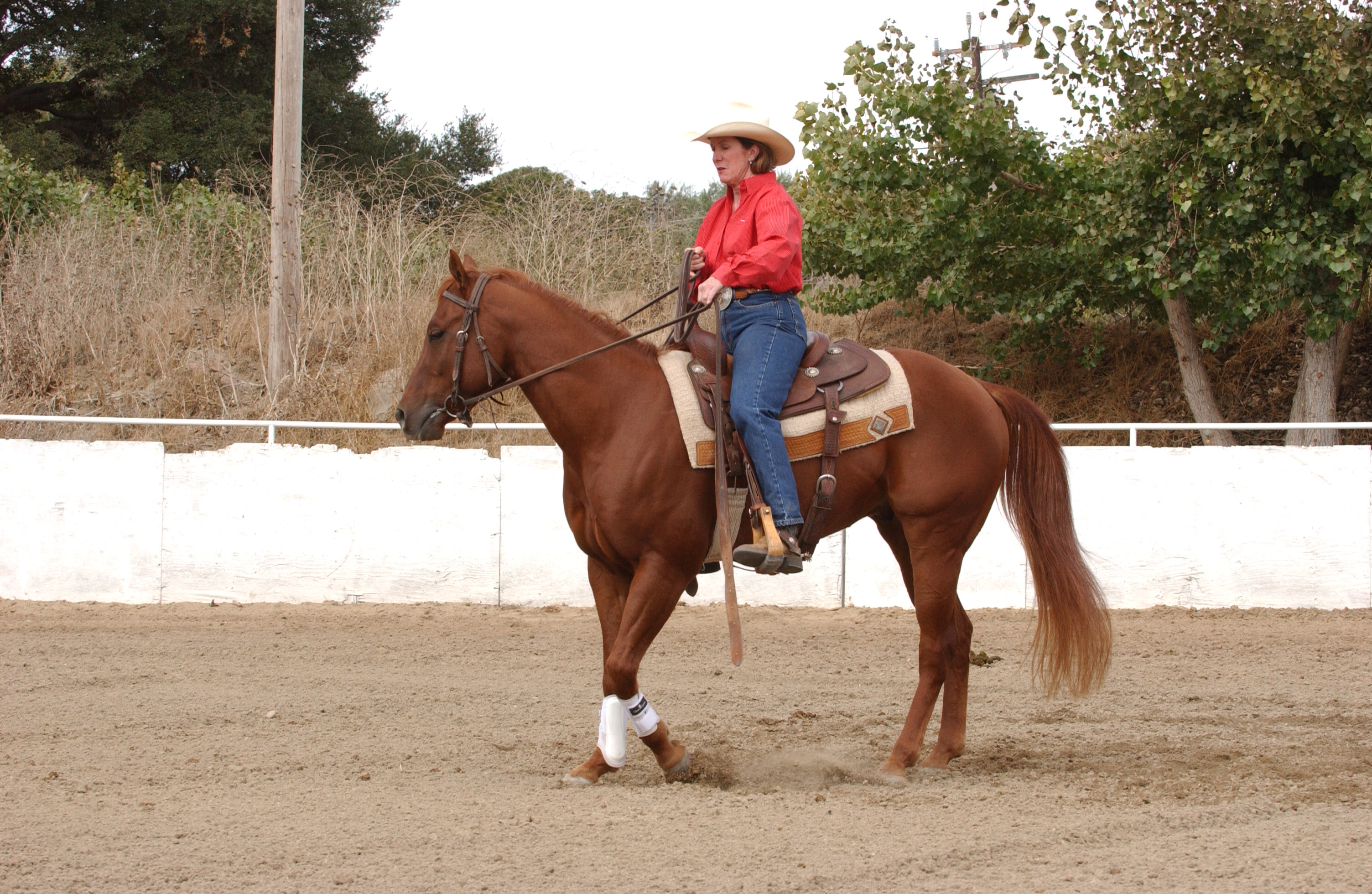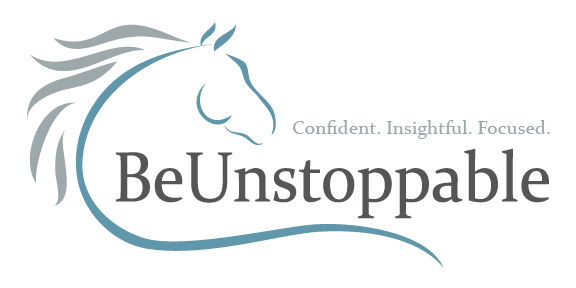I’m going to continue with what I consider to be reining essentials. In this article, I’ll cover #3 – Walking a counter arc circle.
For this exercise, your horse will move in a circle, but with his nose tipped to the outside. His front legs, meanwhile, will be crossing over each other and making a slightly larger circle than his hind legs—sort of like side-passing in a circle (see below). It’s challenging but definitely worth the time and effort to master, as it will help you start to gain control of your horse’s shoulders and ribs. This, in turn, will give you the ammunition you’ll need later, to correct a spin when your horse’s shoulders quit driving.
This exercise also refines your control over your horse’s head, neck, and shoulders, plus increases your overall awareness of how your rein and leg cues influence your horse’s body. Your circle should be perfectly round, except instead of the hind feet following directly in the tracks of the front, the front feet will be on a slightly larger circle than the hind. Because it involves lateral as well as forward movement, your horse’s front legs should be slightly, but evenly crossing over each other.
Your horse should also stay soft in your hand, his shoulders driving with cadence.

I’ll describe a counter-arc circle to the left (to do one to the right, simply reverse all cues). Walk your horse forward, using both your legs in neutral position to move him in an energetic rhythm. Apply light pressure to your right rein to tip your horse’s nose to the outside (so that you can just see the corner of his right eye). At the same time, open your left rein slightly away from your horse’s neck, to indicate leftward movement, and apply clear pressure with your right leg in neutral position or between your cinches. Remember—you want his hindquarters to be on a slightly smaller circle than his forehand.
If your horse doesn’t respond, use your cues more actively. Once he begins to respond, continue to cue him rhythmically to encourage him to move smoothly and with cadence around the circle. Keep a feeling contact with the right rein to keep his jaw soft and his nose tipped to the outside.
TIP: This is a challenging exercise. Before you attempt to ride it, try it on foot, without your horse. Draw a 20-foot-diameter circle in the dirt, then move yourself laterally around it, tipping your head to the outside and imagining that your legs are your horse’s front legs as they step laterally over each other. Think and feel how you’ll need to influence your horse’s body with your hands and legs to accomplish the same circle mounted.
When you do attempt it mounted, give your horse (and yourself) time to figure it out. Be patient and pay close attention to how your cues influence your horse, and you’ll find your “feel” in the saddle increasing dramatically.


Your article helped me a lot, is there any more related content? Thanks!
Can you be more specific about the content of your article? After reading it, I still have some doubts. Hope you can help me.